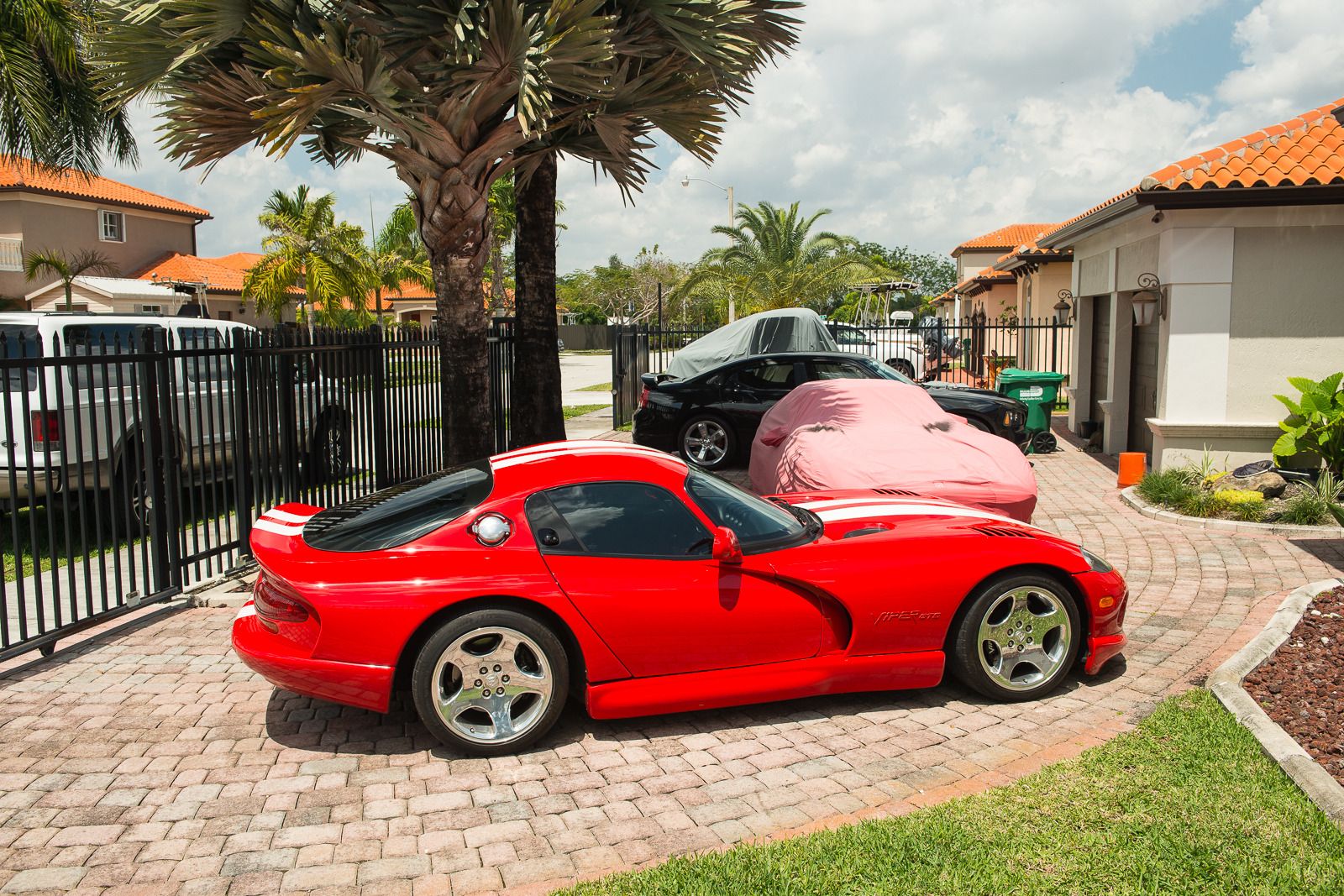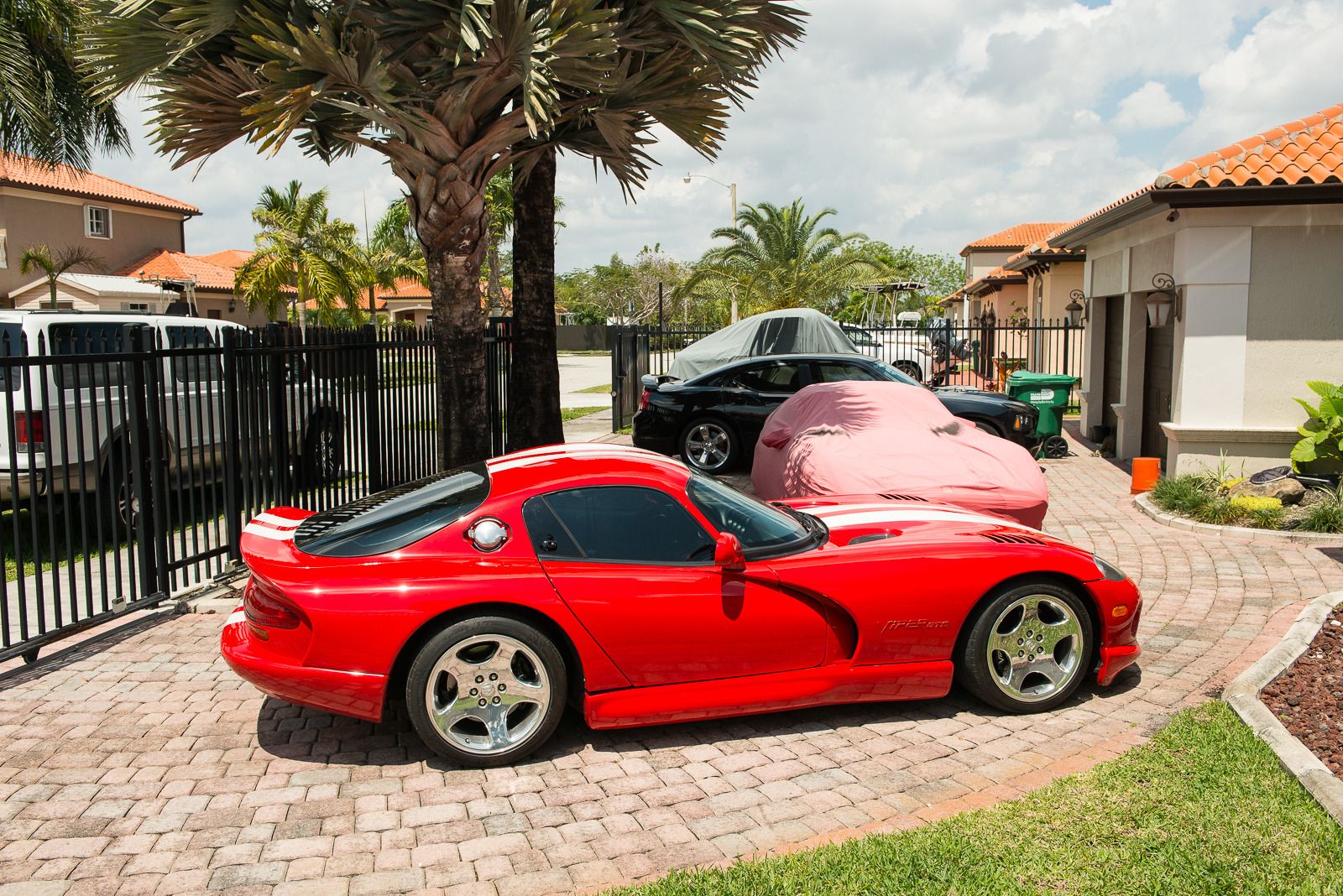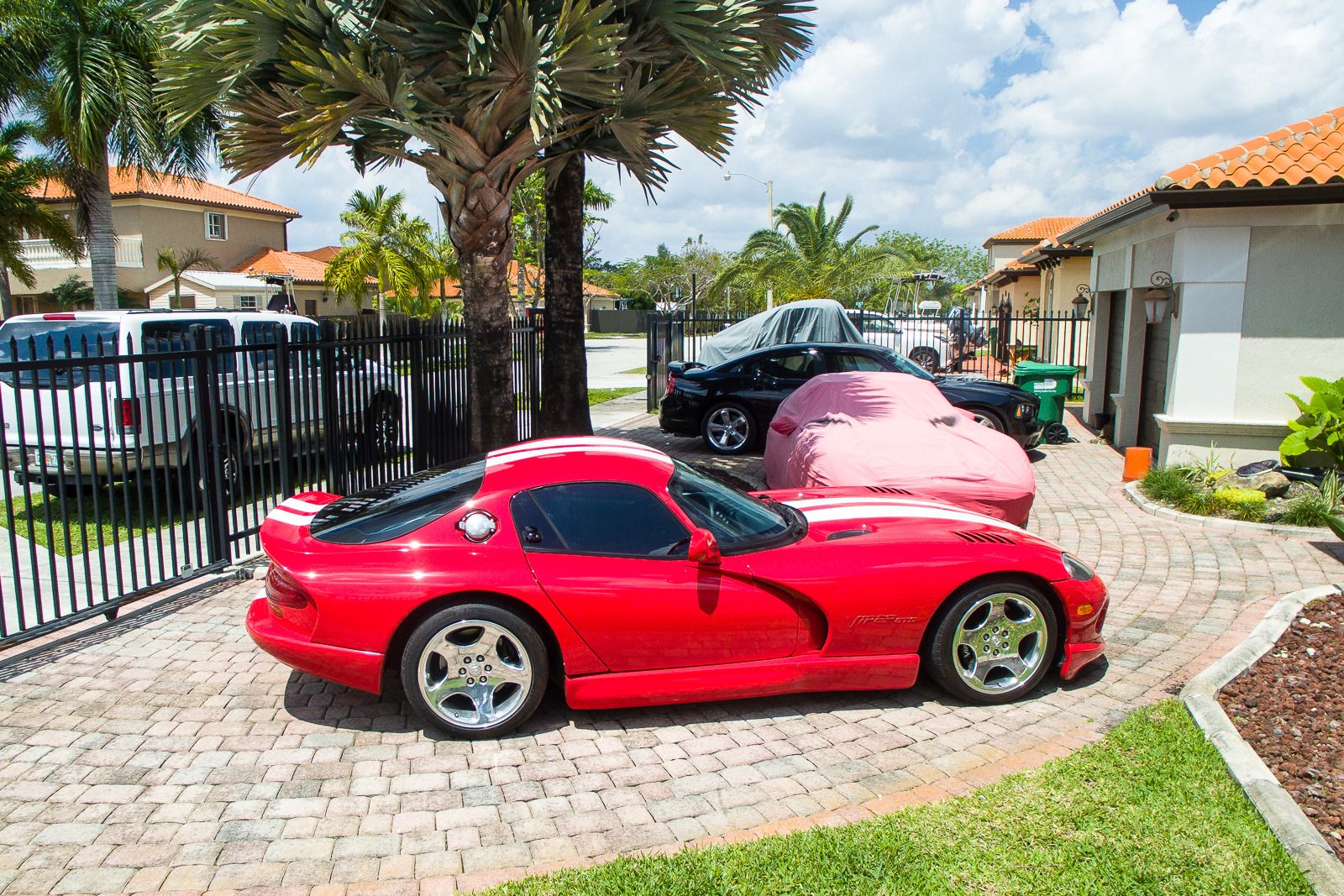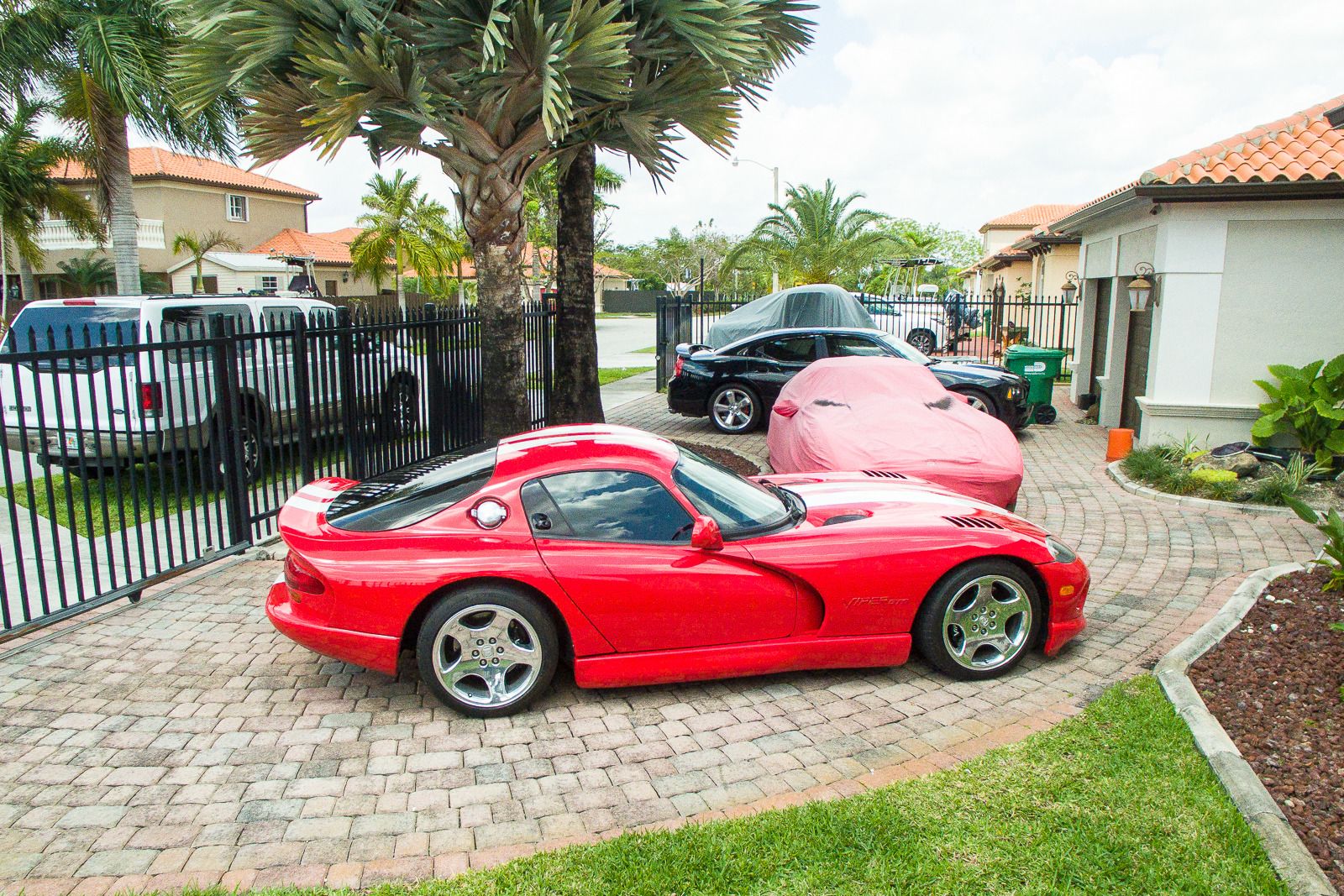OK.... So here's the comparison shots.
These were all taken today. I gave you guys shots with a variety of textures. Some smooth lines, some trees, some grass, some pavers, reflections, ect.
All the shots were shot in RAW format (NEF files from the Nikon DNG files from the DJI). All the shots were at the full resolution the camera can produce in each case. All the shots here were process in a general process (ie I did not go in to edit pixels) with Lightroom. I adjusted the white balance at the same point for all the photos (a neutral point on the car's tire) and all had adjustments made to saturation, contrast, vibrance, etc. They were all sharpened after all other adjustments were made. The Nikon photos can take more agressive sharpening because of the fact they are 36MP images. The DJI files can handle less because they are smaller. Also, I cropped into the DJI shots slightly to try to match the framing as much as I could. All the shots have been reduced to 1600 pixels on the longest axis. This would benefit the drone shots because they require less reduction.
I am sure that I am forgetting something... but if you have a question, ask me.... no worries.
These two shots are from a Nikon D800 with a 24-70mm, f2.8 Nikon Lens. The lens was set to a focal length of 28mm. I took one shot with a polarizer and one without. The camera was on a solid tripod with a ball head and the lens axis was at about 6 feet off the ground. In short, this is the control.
This shot's data: ISO 100, 1/200s, f/8.0, Circular Polarizer on the lens.
This second shot: ISO 400, 1/2000s, f/8.0, no polarizer on the lens.
Between these two shots you should see very little difference. The main difference will be with the reflections/flare coming off the red car's quarter panel and the black car's quarter panel (in the background). That is the effect of the polarizer. Since both shots where taken from a locked down, tripod mounted camera, the shutter speed is irrelevant except for, perhaps, the leaves in the trees moving about in the wind. This shots should appear very sharp and you can use them to compare against the Phantom 4K camera shots.
Here you will see the shots moving about a bit. Reason is that the drone was bucking about in a breeze and I can only get it "close" to the same spot as the tripod mounted camera.
These are the drone photos.
The first shot is with only the polarizer in place. Figure about a 1.5 stop difference. (slower shutter)
Shot Info: ISO 100, 1/400s, f/2.8 (aperture cannot be changed)
The next shot has no polarizer and the shot info is: ISO 100, 1/750s, f/2.8
To increase the shutter speed, I bumped up the ISO. Since we cannot change aperture, it is the only option.
Shot info: ISO 400, 1/2000s, f/2.8
In these shots you will see some differences. I'll highlight a few for you that will show sharpness differences.
- In the first two drone shots, check the reflection in the rear polished wheel. If you look at the reflections, you will see the brick pavers reflections are less sharp.
- In the first two drone shots, you should also see less detail in the grass than in the latter shots and/or when compared to the DSLR shots.
- Look at the detail in the trunk of the two palm trees directly behind the red car. You'll see more detail in the DSLR shots
- Compare the red car cover from one shot to the next. Look at the creases. NOTE HERE... don't mistake more contrast (sun comes in and out) because of shadows with more sharpness. Look at the hood. where it is always evenly lit.
- Look at the pavers in the foreground and the lines. You can see the curvature in the tops of the pavers in the DSLR shots but it goes away a bit in the slower shutter drone shots.
Other things that showed up.... The increase to ISO 400 on the drone added a significant amount of noise in the photo. You can see that in the red paint. If you look at the ISO 400 shot from the drone, you will see a snow/noise effect on the paint. If you look at the DSLR shot, the color is dead smooth. Note that neither of the DSL shots show noise regardless of the ISO. This is basically a factor of the sensor size. It will typically show most in red...hence the reason I shot the red car.
Bottom line......You will see some differences in the shots. I took these all at fairly high speeds. 1/200s is on the fence really for a sharp shot. If I had it do do again, I'd drop a ND32 filter on there and shoot at ISO 100. Then you will see shutter speeds in the 1/60 to 1/120s and that will make the blur more obvious.
Hope this helps.....












